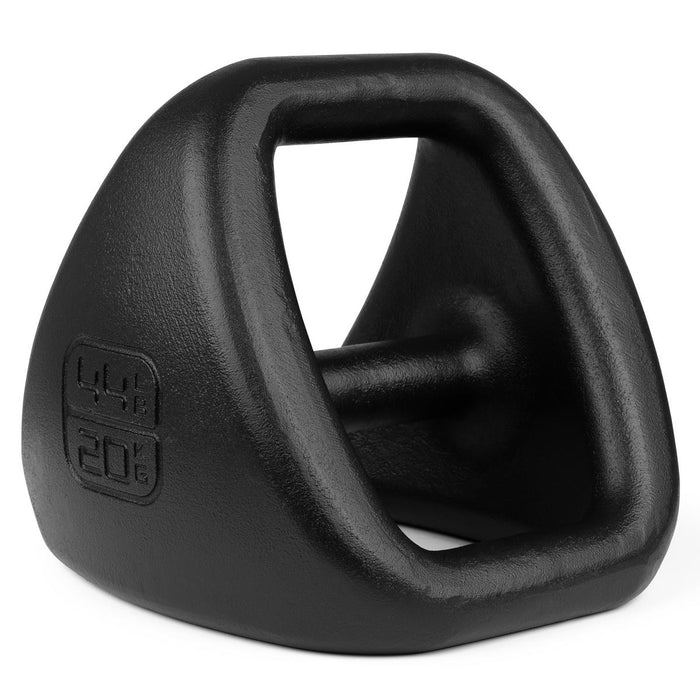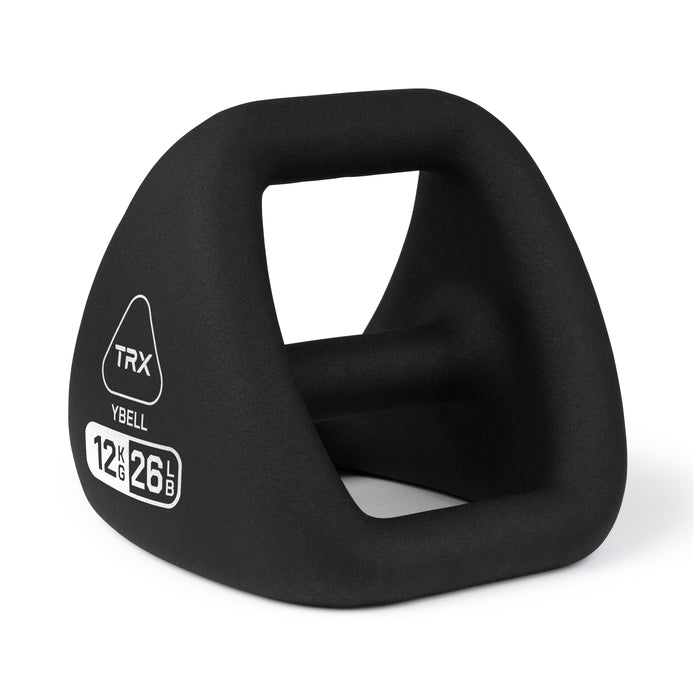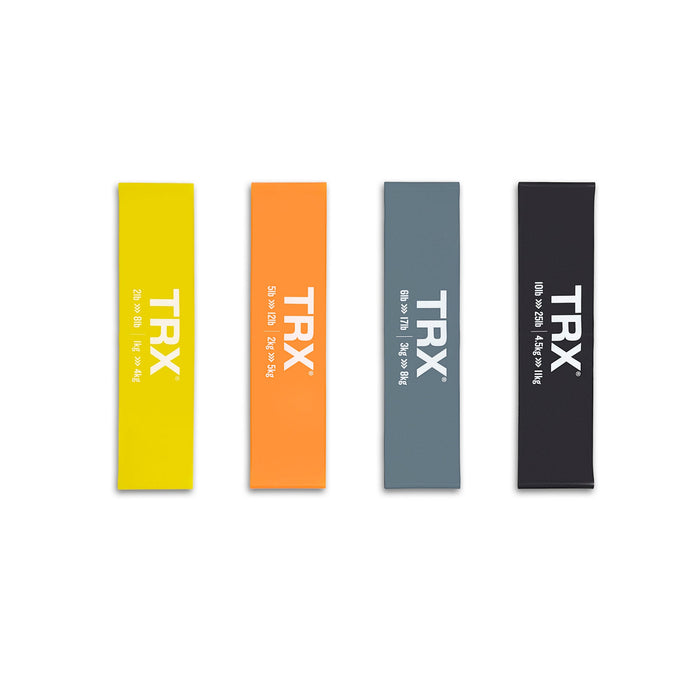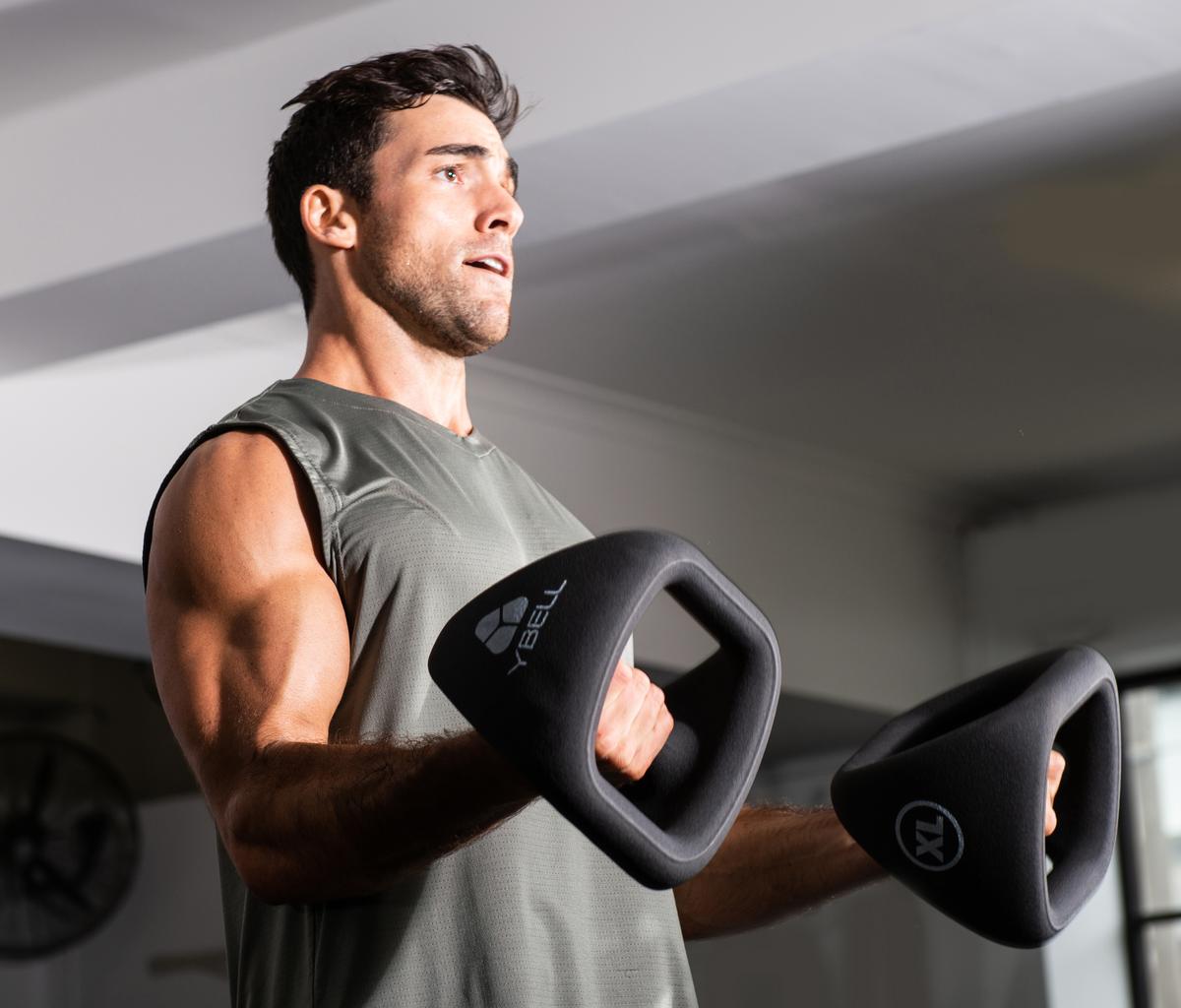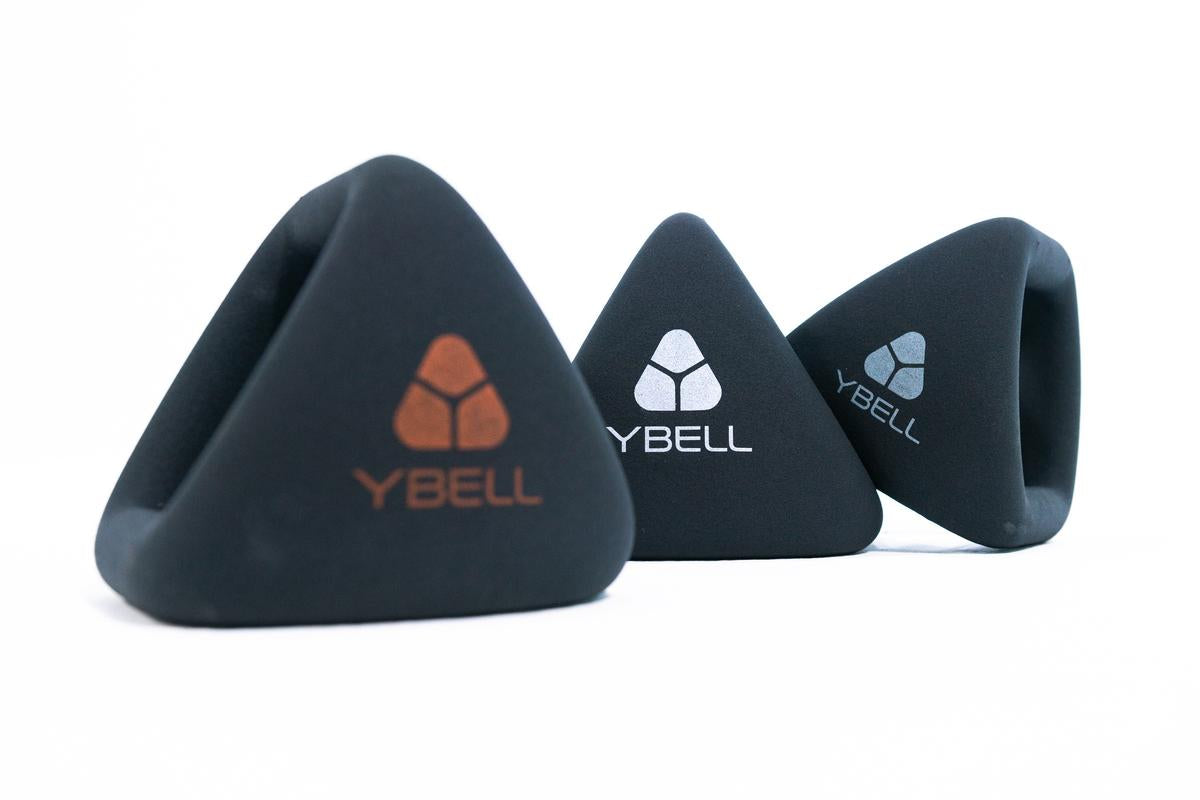Have you wanted to build your own at home gym? Getting a workout in without leaving the house is becoming more common than ever. A home gym allows you the convenience of getting rid of a long commute to a gym and not being forced to wait for a piece of equipment to open up. It can also offer more time to fit in a quick workout throughout the day to reduce stress and keep in shape.
Let’s dig into some good options for how to build a home gym.
Types of Home Gym Equipment
Many people believe you need access to all the equipment of a gym to stay in shape. But with the popularity of home workouts increasing, we continue to see a greater variety of training and equipment options. Want to find the perfect equipment for your home gym setup? Take our quick assessment quiz to get personalized recommendations based on your space and fitness goals.
Your at-home gym is going to be unique in many ways based on your training goals and preferences. But the classic pieces across most gyms are cardio equipment, weight training equipment, and basic gear for stretching.
Cardio Equipment for a Home Gym
For those with an ample budget or a dedicated room in your home for a gym, your equipment options are limitless. Many will start by purchasing one or two critical pieces of cardio equipment. Cardio exercise is all about keeping your heart rate elevated for an extended period.
Treadmills
Whether you’re an avid runner or like to take long walks, treadmills can be the perfect piece of home workout equipment. If you live in an area with harsh weather, treadmills allow you to still get a solid cardio workout without going outside. Most offer varying speeds and inclines to help you get more out of your training.
The average treadmill costs around $1,000. If you’re looking for Bluetooth connectivity to your smartphone or HD touchscreens, you’ll probably be paying around $2,000+. No-nonsense models run as cheap as $400, but many of these have weight limits around 100 lbs.
Exercise Bikes
Stationary bikes are one of the best forms of aerobic exercise. Some upright models offer full-body workouts, and recumbent models can provide a low-impact option if you have hip or knee pain.
You can find budget-friendly bikes for a few hundred dollars with simple comfort features like padded seats, adjustable handlebars, or resistance settings to increase the intensity. High-end spin bikes with touch screens often come with monthly subscriptions for workout programming and tend to run around $1,500+.
Ellipticals
Ellipticals are a great cardio option for those who need low-impact workouts. Traditional ellipticals give you full-body training by targeting muscles in your arms, legs, chest, and back.
Small space models that can fold up for easy storage run as low as $300, though many of these offer less range of motion. Like treadmills and bikes, high-end models provide touch screens for live coaching or Bluetooth to connect to fitness apps and run for around $2,000+.
Weight Training Equipment for Your Home Gym
For muscle gain, you’ll want some high-quality free weights or weight sets for your at-home gym. If you’re looking for some strength training as well, you’ll want to add in a workout bench and a few sets of traditional workout equipment like dumbbells, kettlebells, or medicine balls.
Dumbbells
Dumbbells are versatile free weights that are easy for beginner and advanced workouts, which is why they’re a staple workout tool in professional gyms and home gyms alike. Dumbbells have evenly distributed weight, allowing you to isolate specific muscles in different ranges of motion. They offer various benefits for users, including improved muscle force and flexibility, increased coordination, and promoting muscle and joint stability.
You’ll want to pick up a set of multiple weights, which will run around $100 to $300. Dumbbell prices will depend on material and coating, though the average is usually $2/lb. Bear in mind that the price per pound is often higher with smaller sizes.
- Two 5 lb. dumbbells — $20
- Two 10 lb. dumbbells — $40
- Two 15 lb. dumbbells — $60
- Two 20 lb. dumbbells — $80
Kettlebells
A kettlebell is a cast-iron or steel ball with a handle on the top that allows the center of mass to extend beyond your hand(s). Kettlebells offer many skills, including core strength and stability, full-body conditioning, enhanced coordination, and cardiovascular conditioning. When used correctly, kettlebells can help you to achieve many of your weight training and health goals.
Kettlebells typically run $2/lb, though prices will vary depending on the material, coating, and brand. Like dumbbells, having multiple weight sizes can be helpful as you progress and increase your muscle gain. A set of 15-, 25-, and 35-pound kettlebells will typically run around $150.
Medicine Balls
Medicine balls are about the size of a basketball and typically weigh anywhere from 2 to 25 pounds. The most common weights are 6-, 8-, 10- and 12-pounds. They’re great for strength, coordination, speed, cardio training, and increasing joint and muscle mobility. Most med ball exercises will engage your core, shoulders, triceps, back, glutes, hamstrings, and quads. They help you work deeper muscles, which can be vital to maintaining good posture and increasing core stability.
As with dumbbells and kettlebells, prices vary by weight, material, brand, and impact absorbency. A typical set with 4-, 6-, 8-, 10-, 12-, and 15-pound balls will average around $250.
Barbell and Plates
A barbell is a long metal bar usually weighing 45 pounds that you load with weighted plates on each side. It’s great for gaining muscle and max strength development. You’ll also want to consider adding a squat rack and a bench press to round out your set and help you focus on proper form.
The average barbell and plate set costs around $700. Plates typically run for $2/lb, though prices will vary based on the material of the plates. You’ll want two plates in each weight size (one for each side of the bar):
- Barbell — $250
- Two 5 lb. plates — $20
- Two 10 lb. plates — $40
- Two 25 lb. plates — $100
- Two 35 lb. plates — $140
- Two 45 lb. plates — $180
A weight bench and squat rack will each typically run another $100 or more. If you’re planning to do Olympic lifting, you’ll want to invest in quality plates, which will increase the cost dramatically.
Do your next workout with our TRX equipment:
Stretching Essentials for Every Home Gym
Add in a yoga mat, some resistance bands, and a few foam rollers, and you’ll have all your at-home gym essentials.
Yoga Mat
Even if you’re not practicing yoga at home, a quality yoga mat is essential for any home gym. First and foremost, yoga mats give you a better grip when stretching before your workout and performing various exercises. Balance and stability can be vital when you’re learning new movements or working with weights. Mats can also be softer on your joints for any high-impact activities.
The top three qualities to consider when buying a yoga mat are the material, the thickness, and how easy it is to clean. Prices will range anywhere from $20 to $200 depending on those factors.
Resistance Bands
Resistance bands are an often overlooked and underestimated workout tool. Bands range from level 1 through 6, with level 1 being the easiest to stretch. As you progress in your various compound exercises, adding resistance bands can focus your control. They also recruit your stabilizing muscles, making them perfect for functional training.
A set of resistance bands will typically range anywhere from $20 to $40, making them highly affordable for your home gym.
Foam Rollers
Foam rollers are long tubes often made of rubber or dense styrofoam. To use them, you slowly roll your back, hips, or calves — really any area of your body — over the top of the roller. You’re using your body weight to release tension in your muscles by performing self-massage and myofascial release. Using a foam roller before your workout can help you to stretch your muscles to warm up for a workout. Foam rolling can also help your muscles recover from an intense workout.
Foam rolling targets deeper muscles. If you’re new to foam rolling, it can be somewhat painful (in a good way!), so buying a less dense roller can help with that. Foam rollers typically run around $20 to $35, depending on length and density.
Tips for Building a Home Gym on a Budget
If you’re building a home gym with a limited budget, it’s important to plan around the equipment that'll have the most impact. Should you save up and purchase everything at once or piecemeal it together as your budget permits? Should you start with a big piece of equipment like a treadmill, or focus on weights first? Here are some budget-friendly options to consider:
Buy Used Workout Equipment
It’s not a stretch to assume that used equipment will be better for your wallet. Throw in the cost of shipping heavy weights, and you’ll be glad you chose to recycle and reuse vs. buying brand new. And with larger cardio pieces, you won’t have to worry about the long delivery wait times,
New equipment has its perks, but a few scuffs and minor scratches aren’t going to affect your equipment’s performance or the benefits you’ll receive from using it. A used 20-pound dumbbell isolates muscle groups the way a brand new one will.
When looking for used equipment, you can check Craigslist or other buy and sell sites. Consider checking yard and estate sales, as you’re likely to find more equipment at once. Many gyms will also sell used equipment as they upgrade, so it never hurts to reach out to them.
Buy YBells to Reduce the Pieces of Equipment
YBells are a 4-in-1 alternative to dumbbells, kettlebells, medicine balls, and push-up bars. YBells are a much easier way for you to have access to all four pieces without the clutter and expense of purchasing multiple pieces of equipment. By simply changing your grip, you get all the workout and training advantages in one award-winning, compact, and comfortable design.
Another benefit of YBells is their versatility — They’re great for strength training, functional exercises, compound movements, high-intensity resistance training, and even cardio workouts.
The YBell Vertical Rack is a storage option that will help you save space, especially if you’re buying multiple weight sizes. And it looks clean and modern, making it easy to fit into any room in your home.
Look for Equipment With High Versatility
Whether you’re building a gym on a budget or have a small area that you’re trying to organize into a workout space, you’ll want equipment that can do a lot but take up as little space as possible. Equipment that can get your heart rate up (which is vital to a cardio workout) and target your muscles is the best way to get a better bang for your buck.
Versatility can also mean getting creative and using what you’ve already got on hand if you’re piecemealing your home gym together. Here are a few examples:
- Fill milk jugs with water or sand to use as weights
- A backpack filled with books can act as a weighted vest
- Sack of flour or sugar can double as a med ball
- A pair of nylons or elastic leggings can act like resistance bands
- Thick, wool socks can replace gliders if you’re working on wood floors
- A thick throw pillow or chair cushion can serve as a Bosu or other balance tool
- A sturdy chair can be used for tricep dips and bent over rows
The primary reason to build a home gym is to work out. Yes, that seems extremely obvious, but remember that convenience and accessibility are vital to your motivation to work out. Factors like your commute, rush hour, disinterest in your equipment, or the difficulty of your equipment mean the difference between skipping a workout or powering through a workout.
Putting together a gym you will be happy with and excited to work out in will pay off tenfold as you start basic exercises at home and march towards your fitness goals. When there isn’t enough time in the day, supplementing a quick workout is easy to do when you have equipment you enjoy in the comfort of your own home.


